
I don’t think I am the best SEO out there. And I am not the most well-known SEO.
But when you have been doing SEO as long as I have, eventually you meet most of the players in the space.
And over the years, I’ve met a lot of Google employees. Some of them were in high positions, while others were not.
Out of all of the Google employees I met, none of them told me anything that shouldn’t be made public. And I also never put anyone in a position that would compromise their job.
But what was crazy is that the SEO advice I got on August 4, 2015, from a Google employee changed my life.
And what’s even crazier is that the advice I got on that particular day, is probably known by almost every SEO out there, but I bet less than .1% of SEOs use this strategy.
In other words, a Google employee shared knowledge that was readily available on any major search blog, yet I was too lazy to implement what I already knew.
So what did I learn?
Well, before I go into what I learned, lets first share the results of this one SEO tactic. The reason I’m doing this is that if I just share the tactic with you, most of you are going to ignore it like I did.
But if I share the stats with you first, hopefully, you’ll be more open to implementing what I am about to teach you.
So here are my traffic stats from August 2015 for NeilPatel.com:
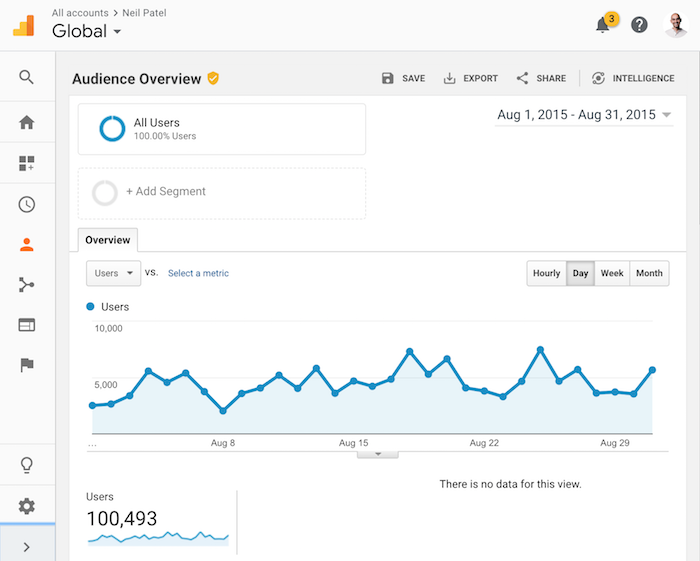
And here are my traffic stats for the trailing few months after I had learned this new strategy:
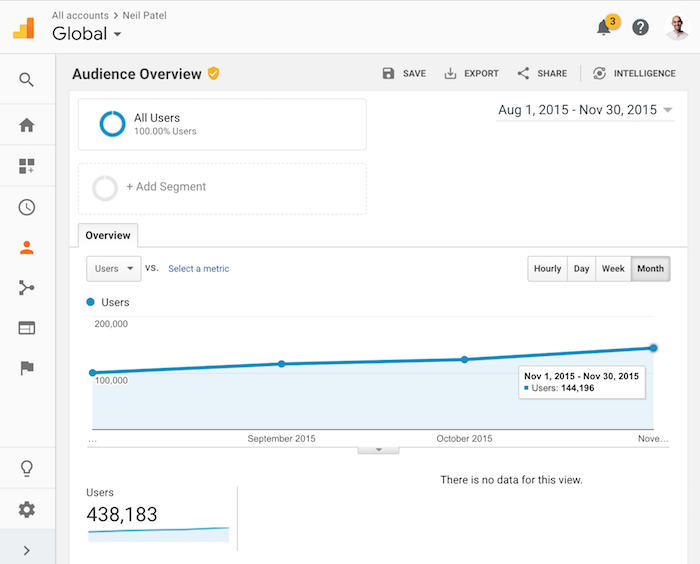
As you can see from the image above my traffic was growing. I went from roughly 100,493 unique visitors a month to 144,196. Not too bad.
But here is the thing… my traffic was naturally growing from all of my other marketing efforts. And I didn’t even start implementing what I learned from Google until November 28, 2015.
And the results didn’t kick in right away. It took over a year before I really started seeing growth. But once I hit the 21-month mark, things really started to skyrocket.
So, what was the big lesson?
Well, maybe you’ll be able to figure it out by looking at the screenshots below. What’s the big difference in the screenshots below?
Here’s the first one from NeilPatel.com:
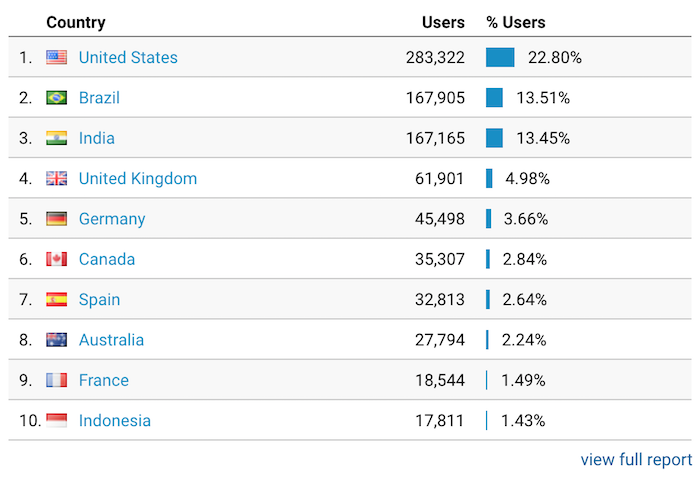
And here’s one from the KISSmetrics blog (which I now own – I’ll blog about this another day):
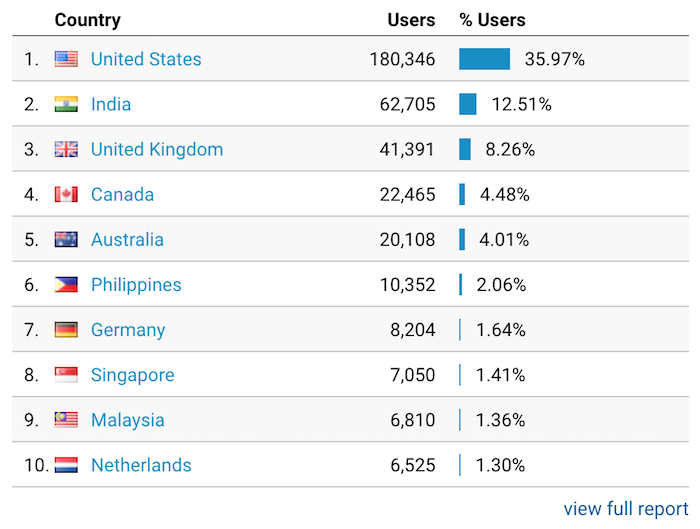
And here’s one from my older blog, Quick Sprout:
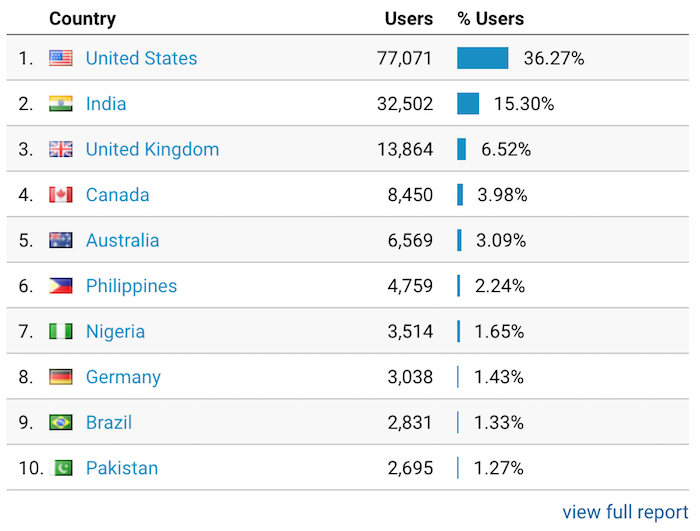
What’s the big difference between them?
All three of the blogs are about marketing. The content is similar… so what’s the difference?
KISSmetrics and Quick Sprout generate their traffic from roughly the same regions. But NeilPatel.com, on the other hand, generates traffic from regions like Brazil, Spain, and Germany at a much higher percentage.
So why is this?
Google told me to go multi-lingual
It’s hard to rank on Google.
No matter how many blog posts I write about SEO, most of you won’t rank well because it takes a lot of time and countless hours of work (or money).
But as my friend at Google once told me…
There is already a lot of content in English but not enough in other languages even though the majority of the people in this world don’t speak English.
In other words, you need to translate your content.
On November 28, 2015, I published my first article in Portuguese (if you click the link there is a good chance it keeps you on the English site, so you may have to click the flag next to the Neil Patel logo and select Brazil after you click on the link).
Fast forward to today and I have 4,806 blog posts published on NeilPatel.com of which 1,265 are in Portuguese, 650 are in German, and 721 are in Spanish.
I slowly starting to go after more languages because the strategy is working. Here are my traffic stats in the last 31 days in Brazil:
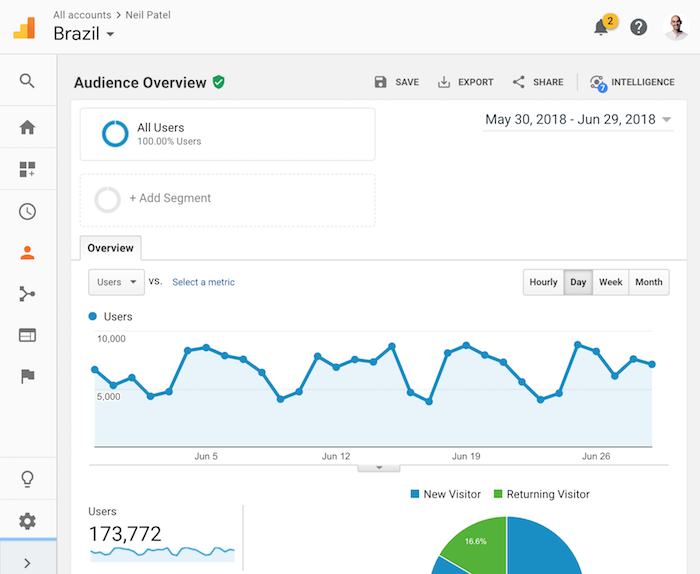
And here are the stats for German:
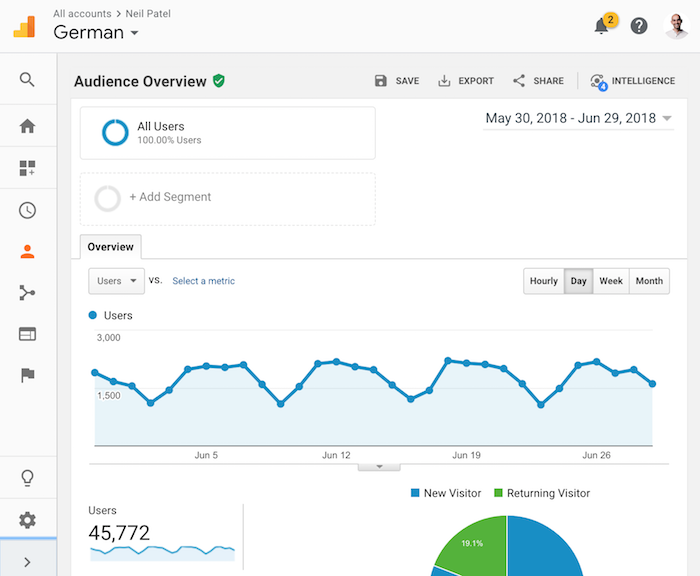
And Neil Patel Spanish:

It takes time to do well within each region when you localize the content, but it’s worth it because there is literally no competition.
Seriously, no competition!!!
And I know what you are thinking… people in many of these countries don’t have as much money, so the traffic is useless and won’t convert.
If that’s what you are thinking then let me be the first to tell you that you are way off!
You need to look beyond English!
Let’s look at the most popular languages in the world:

Now let’s look at the countries with the largest populations:

And lastly, let’s look at GDP per country:
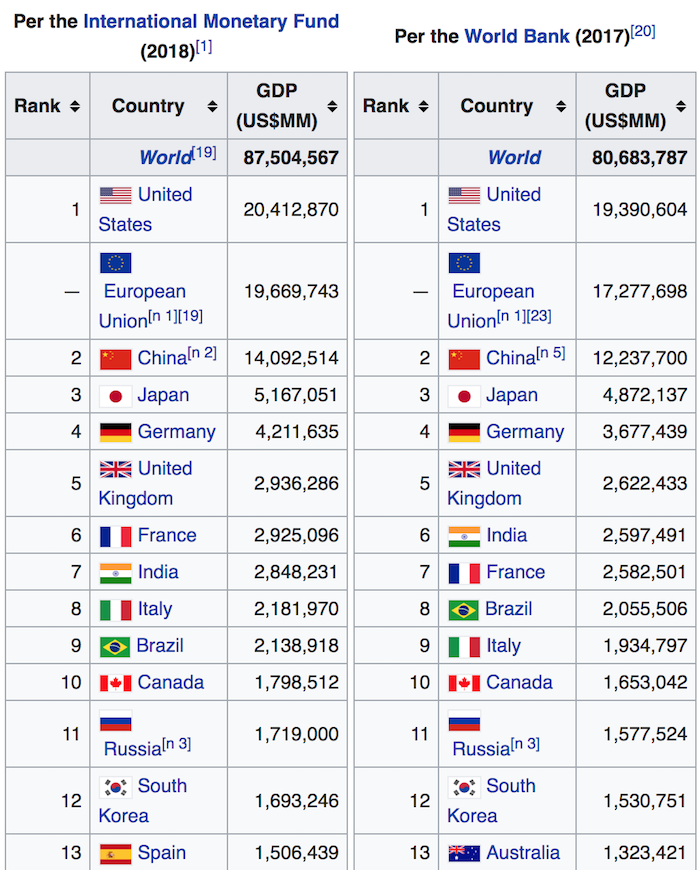
The data shows the majority of the world doesn’t live in the United States, United Kingdom, Canada, or Australia.
There are so many other countries to focus on.
Not only is there a lot of people in regions like Brazil, but their GDP isn’t too bad. And yes, there isn’t as much money to be made in Brazil as there is to be made in the United States… but in the U.S. you have a lot of competitors.
While in Brazil, it’s much easier to dominate, which means you can probably make as much money in Brazil as you do in the U.S.
To give you an idea, when my ad agency expanded to Brazil, we generated over a million dollars in revenue in less than 12 months when I can’t even speak one word of Portuguese.
Well, technically that’s a lie. I know enough Portuguese to order a water and tell the waiter that I don’t want salt on my food
source https://neilpatel.com/blog/seo-strategy-google/
No comments:
Post a Comment